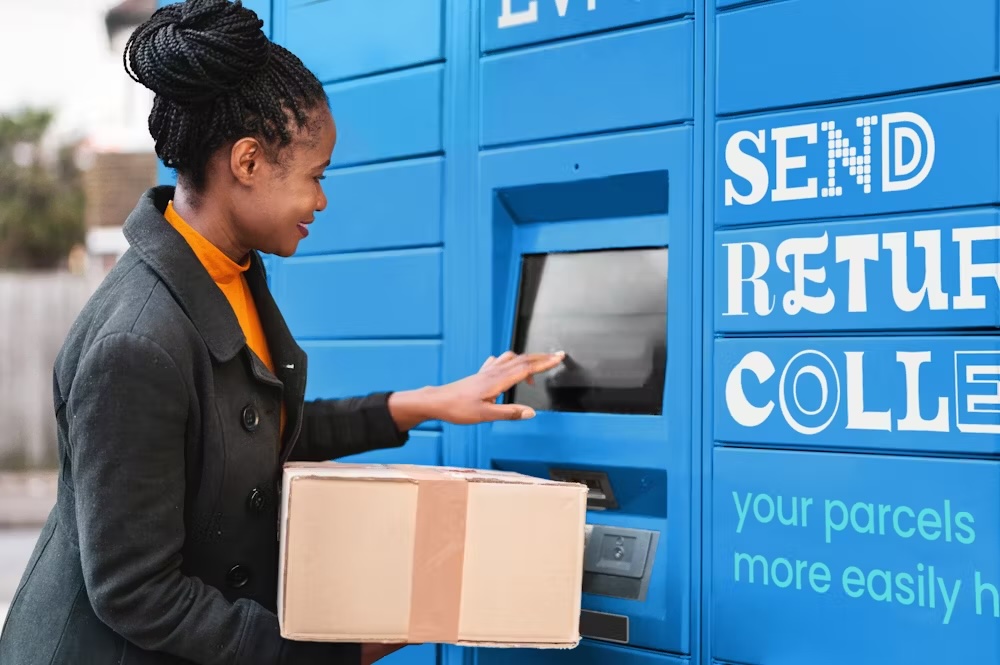As we saw over the Christmas peak last mile delivery is a  tough challenge. To get it right means concentrating on delighting the customer every time, according to Malte Poppensieker, head of UK delivery at Gett Delivery.
tough challenge. To get it right means concentrating on delighting the customer every time, according to Malte Poppensieker, head of UK delivery at Gett Delivery.
In recent years, customer expectations for delivery have both soared and soured. The digital age is characterised by consumers demand for almost immediate gratification, with a need for goods and services to be delivered on the same day as purchase, at a convenient place of their choosing.
Traditionally, delivery can be a long process taking several days. A parcel must first be collected from its pick-up point, then be processed overnight in a huge sortation hub, before being shipped to delivery stations and eventually being loaded onto a van. These vehicles tend to follow the same routes every day. The parcel will finally reach its destination a couple of days after dispatch, or perhaps after an even longer delay, depending on the delivery company being used.
So, what is wrong with this method? Most obviously, the issue is the speed at which the consumer receives the package. Furthermore, these services allow for very little flexibility. Changing the recipient address is usually not possible after the package is dispatched and choosing a scheduled delivery slot is rarely an option for the customer. Other issues faced by businesses and consumers alike include the low reliability of service and the poor quality of customer experience.
E-tailers trying to ‘keep up with Amazon’ face the challenges associated with competing with any large enterprise. From a delivery perspective, Amazon has set the standard in terms of speed. For example, Londoners with an Amazon Prime membership can now receive a majority of items on the same day for free. Amazon has also implemented its super-fast Prime Now offering that achieves delivery speeds of up to an hour.
Finally, the company is experimenting with additional services, such as the live tracking of orders. These services are seeing massive growth rates, and will soon become the standard in the UK, where customers will undoubtedly come to view them as the norm.
With the exception of Argos, which offers a same-day service for orders made by 6pm, few major UK competitors have been able to match Amazon. This is mostly due to the unavailability of compelling, flexible and efficient offerings to cover last-mile delivery. For retailers, this becomes a problem – if they can’t keep up, customers will go elsewhere, and their market share will likely shrink.
As businesses and consumers become increasingly accustomed to this heightened speed and quality of service, the industry will experience a growing demand for reasonably priced high-speed services and more flexible options for receiving goods, such as scheduled delivery time slots in the market.
On-demand courier services have existed for a long time, so in theory they could have already taken advantage of this opportunity in the market. However, up until now they have been held back by the way that on-demand couriers worked very manually, with drivers kept on standby and dispatched by a colleague, driving up costs and making the method useless for most organisations. Today, the latest technology means that these barriers could cease to exist.
The rise of new platforms
The key development is the emergence of new platforms that facilitate flexible delivery models, allowing for the customer and driver to be directly connected in real-time, without the need for any manual involvement.
This kind of model enables the number of driving couriers to be adjusted much more flexibly, for instance through dynamic incentives, eliminating the need to level out workload across the day. Underlying this new on-demand courier model is the use of cutting-edge data science.
Based on big data analytics and predictive algorithms, it is now possible to ensure that the right number of couriers are in the right place at the right time. With the use of this technology to automate and simplify dispatch and delivery processes, organisations have time freed up to focus on adding value.
Mobile technology means that we can now react to real-time demand and immediately calculate efficient delivery routes, with machine learning allowing for algorithms that improve over time based on demand patterns. Data is helping to improve the customer experience and to drive efficiency at the same time.
The rise of flexible working
Accompanying this technology platform is a new model of flexible working. Although some scepticism remains around the gig economy, in practice this working model allows for far more efficient utilisation of assets. For example, a vehicle does not have to be dedicated to either commercial or private use anymore, but can be flexibly used for both purposes.
We can also achieve even higher flexibility by using a fleet of vehicles of different sizes, using the right vehicle for the right job at the right time. It’s critical that an organisation remains consistent in the way that it collaborates with independent contractors and that it allows them to choose when and where to work. There is no getting away from the fact that a good on-demand courier service depends on how well you treat and respect your contractors.
Looking further ahead, on-demand deliveries will become commonplace, and over time, will evolve into services where deliveries can be done autonomously. Fortunately, we are seeing significant investment in the development of self-driving vehicles and the supporting road and technology infrastructure. Autonomous delivery vehicles are less complex compared to autonomous passenger vehicles, and as a result will likely see widespread implementation first.
Experiments with automatic delivery vehicles are already taking place, with this activity likely to ramp up over the next few years, especially as the UK government is committed to having self-driving vehicles on UK roads by 2021.
E-tailers must harness these new technologies in order to keep up with global giants such as Amazon, or they will be in danger of falling behind. The easiest way is to use an affordable and on-demand last-mile delivery offering that incorporates big data insights. Last-mile delivery is about to undergo a dramatic overhaul and the challenges faced by the industry as a whole must be addressed head-on.
Malte Poppensieker, head of UK delivery at Gett Delivery.
Image credits: Fotolia and Gett Delivery








